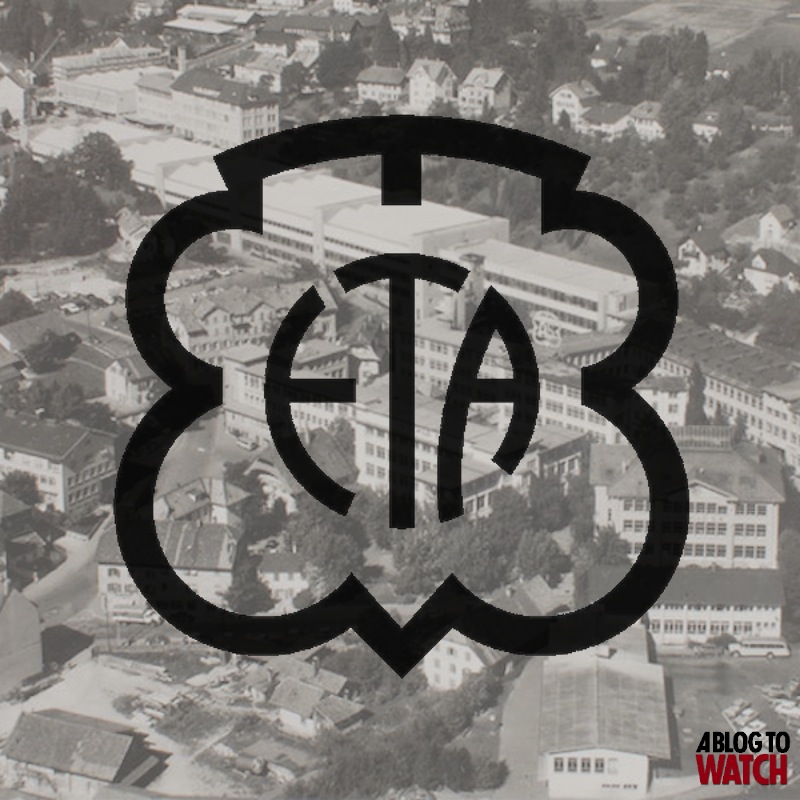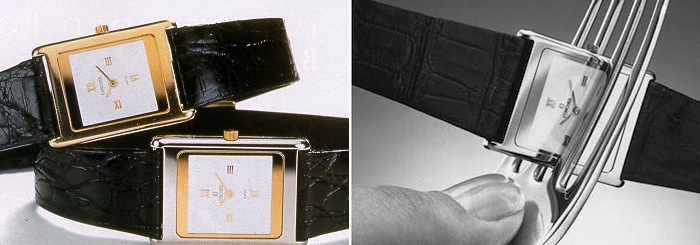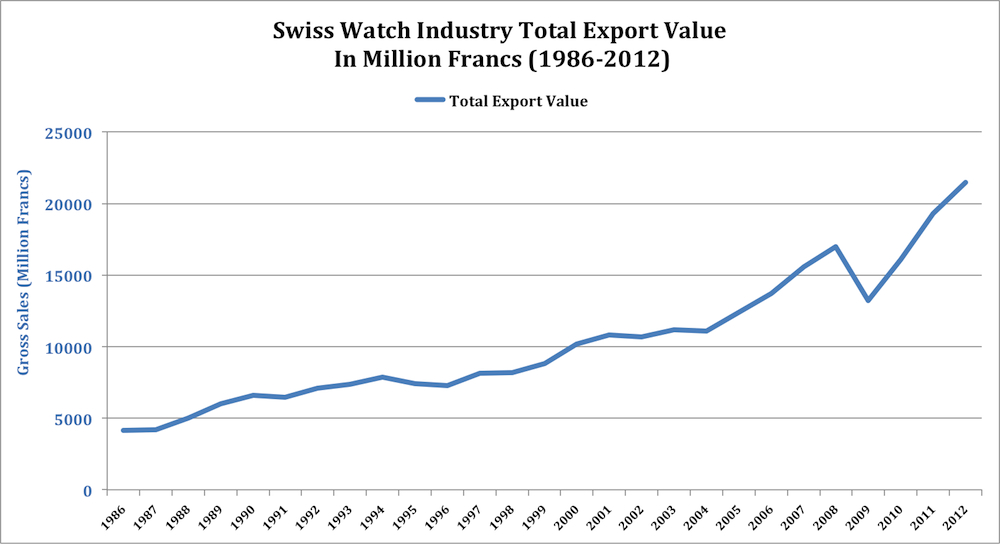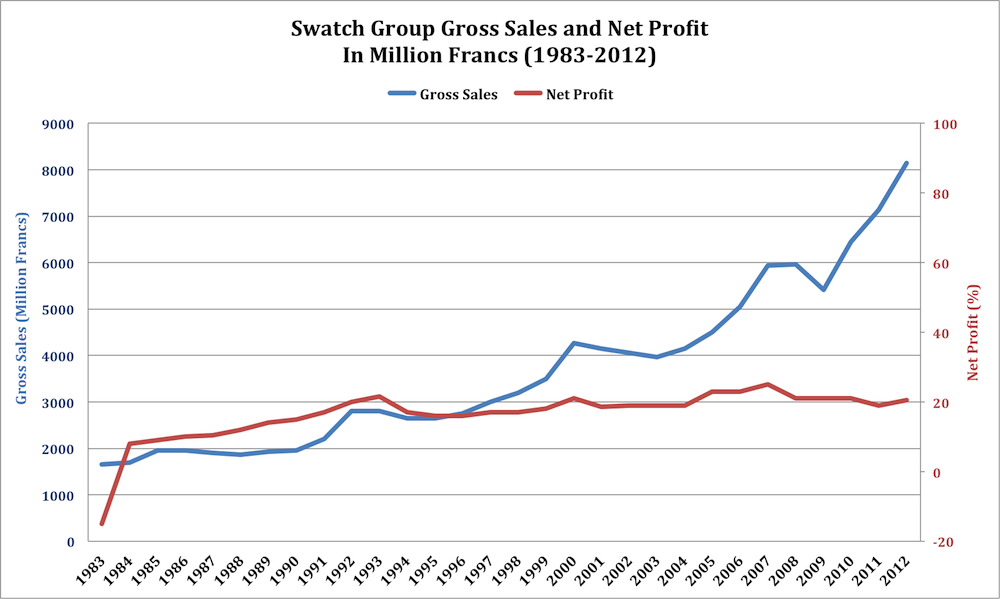A Time of Crisis
Ignorance is bliss, as they say, but this one time that could not be further from the truth – as any one who knows what the quartz-crisis did to the Swiss watch industry will tell you. We will go ahead and say this. The Swiss remained fairly ignorant when it came to quartz technology. The problem was that while they had their quartz movements developed relatively early from the market’s perspective, they reacted much too late when it came to industrializing the concept. The result? They couldn’t keep up with the pricing cuts performed by the Asian competition. To be fair it has to be noted that ETA did get into quartz movement manufacturing, and it is something they do presently as well. They even managed to make the slimmest quartz watch of the time, called the Delirium. Announced in 1978, it was a watch with a thickness of just 1.98 mm – a truly stunning achievement! What allowed them to create a wristwatch so extraordinarily thin was neglecting the main plate and placing the movement’s components on the case back itself.
But no technological developments could have been powerful enough to subdue the effects of the second “problem” they had to face. In 1973-1974 the first oil crisis and the consequent economic recession resulted in the strong appreciation of the Swiss franc against other currencies. This had been making exported Swiss watches more expensive year after year and this went on for almost an entire decade. In essence, the Swiss were losing just about all their markets to Asian competitors for two main reasons. For one, the franc’s appreciation was making their exported watches ever more expensive abroad. For the second, the technology necessary to greatly reduce manufacturing costs had not been developed soon enough. Any one of these circumstances would have been enough to make Swiss watches “bad value” compared to others, but with both of these effects striking simultaneously… there was nothing good to come out of this.
Before we move on, let’s see some basic statistics just so that we can understand the scale of the problem the Swiss had to face. Sales figures of more than 80 million watches per year dropped to a mere 30 million in less than ten years’ time. The market share of Swiss watches worldwide dropped from more than 80% in 1970 to 58% in 1975, and all the way to no more than 15% in 1983! This inevitably resulted in a steep and ceaseless decline in employment, from 89,000 in 1970 to a shockingly low 33,000 in 1985. Counter-measures were required immediately. The mega-groups began excessively rationalizing their operations while tens of thousands have become unemployed and hundreds of factories have diminished. By 1980 – despite all the efforts and sacrifices – ASUAG’s losses had exceeded 44 million francs and Ébauches SA had severely cut the number of manufactured movement types from more than 130 to only 40.
ETA and The Swatch Group
The story of ETA sort of ends – or rather is given a new beginning – with a series of mergers in 1982-1984.
As they say, history repeats itself, and that’s exactly the case here too. By 1982, much like in the 1920s, measures of rationalization were of vital importance as even the giant groups themselves couldn’t survive much longer. By this time, ASUAG’s cumulative losses were in excess of 150 million Swiss francs, and SSIH was on the brink of collapse with the volume of sales dropping from 12.4 million (1974) to 1.9 million watches (1982). All this called for some lightning fast moves before it all went under for good. Ébauches SA decided to move all the ébauches manufacturing companies of ASUAG into ETA SA, despite the fact that negotiations regarding the merger between ASUAG and SSIH had already been in process. As a result, all of a sudden, ETA SA contained all the small and large manufactures that ever joined ASUAG and hence it became a melting pot for hundreds of years worth of diverse watch making heritage and know-how. In 1983 the two giants, ASUAG and SSIH finally joined forces as well, and they first turned into profitability by 1984.
That though, didn’t satisfy the banks who had been funding all this pandemonium. UBS, Credit Suisse and Swiss Bank Corporation have poured more than 900 million francs into ASUAG and SSIH only to keep them going. They had every reason by now to consider the Swiss watch making doomed and that sentiment was only enforced by the Japanese who approached them with a generous offer for both ASUAG and SSIH.
Had the Japanese managed to purchase these two major groups, they would have owned nearly all major Swiss manufactures, patents and brands. But that did not bother the banks and so they asked the prestigious consultancy firm called Hayek Engineering AG to prepare the sale… but the president of the company, Nicolas G. Hayek, was outraged by the concept of Swiss watch making practically getting sold under his supervision. I assume most of you know where this is going. As the Wall Street Journal quotes Mr. Hayek: “The watch industry of Switzerland sells, in fact, the message of the culture of Switzerland, of everything you have heard about, our chalets, our fields, our mountains. One day, the president of a Japanese watch company in America said to me, “You cannot manufacture watches. Switzerland can make cheese, but not watches! Why don’t you sell us Omega for 400 million francs?” I told him, “Only after I’m dead!”
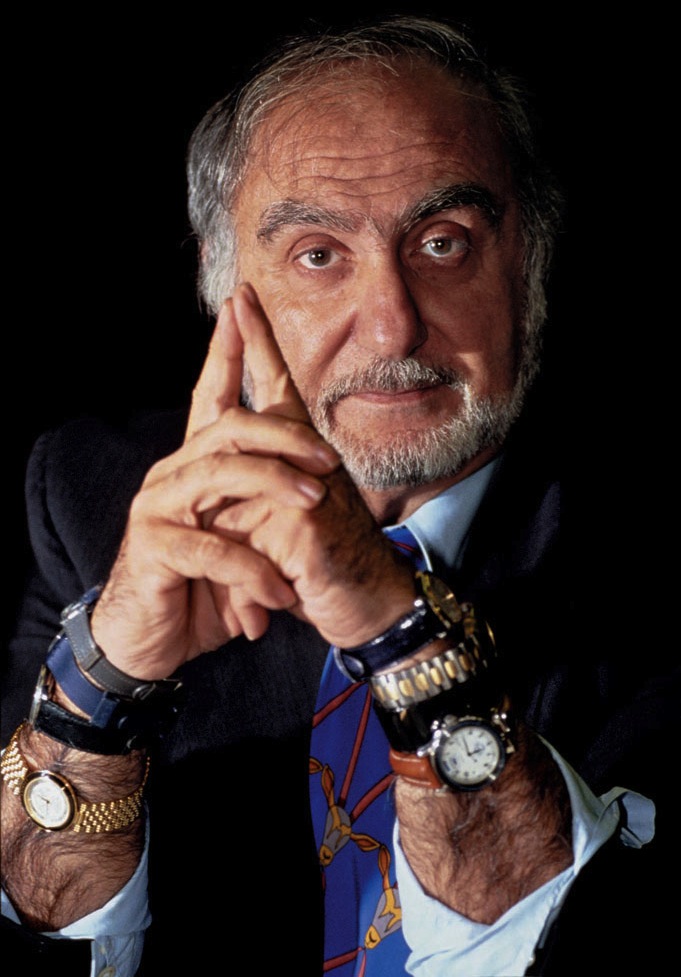
“The watch industry of Switzerland sells, in fact, the message of the culture of Switzerland, of everything you have heard about: our chalets, our fields, our mountains. One day, the president of a Japanese watch company in America said to me, ‘You cannot manufacture watches. Switzerland can make cheese, but not watches! Why don’t you sell us Omega for 400 million francs?’ I told him, ‘Only after I’m dead!'” – Nicolas G. Hayek, Wall Street Journal
He decided to fight back. However, he chose to do that not with luxury watches, but with the result of a revolutionary idea of something cheap, simple, fun… and Swiss. The Swatch watch. Launched in 1983 with prices below $50, the quartz Swatch was intended to be a second watch with which one could still express his or her personality, lifestyle or mood. Swatch, however, could not have existed had it not been for a movement design by two ETA engineers, Elmar Mock and Jacques Müller. The movement was based on the aforementioned layout developed for the ultra-slim Delirium quartz watch of 1978: the parts were installed on the back panel of the watch and not on a main plate.
They have also managed to decrease the number of parts from about 150 (as done by Japanese competitors) to a mere 51, hence further reducing the manufacturing costs. In no time Swatch watches began turning a hefty profit with sales sky-rocketing from 1.1 million the first full year to the 100 millionth piece sold in less than 10 years, in 1992. In 1985 Hayek repurchased 51% of the ASUAG-SSIH duo and created the Swiss Corporation for Microelectronics and Watchmaking Industries Ltd. (SMH) – which was renamed in 1998 to Swatch Group Ltd.
By now, we have become more familiar with the details of how ETA came to be and what incredible difficulties it had to face. But in order to get the complete picture of the manufacture we must not stop just here. Instead, we should go on and discover the company’s place in the last three decades of Swiss watch making. Our primary reason to do this is that it will help us better understand how ETA practically became the dominant power in the industry.
Around the mid 1980s it finally appeared as though the industry might find its way out of its previously discussed – and utterly miserable – situation. Actually, by 1986 it all started happening and before long, Swiss watch making had set itself a very different trajectory indeed. One where only the sky was the limit. What you see above is an extract from several reports by the Federation of the Swiss Watch Industry (FH), showing how the industry performed between 1986 and 2012. In blue is the total export value (in millions of francs), indicating a solid growth with exports nearly doubling between ’86 and ’94.
A truly heart-warming sight for sure, but it would not have been possible without some serious strategic planning going on behind the scenes. We have already seen that whenever this industry is hit by a crisis, the established custom is to try and reduce costs through the centralization and rationalization of production. The code of conduct was no different this time around either.
As we know, from 1985 onwards there were no more ASUAG or SSIH – they were all united in Nicolas Hayek’s SMH group. Consequently, ETA now belonged to SMH as well, but its story was very far from over as the aforementioned approach remained perfectly intact after SMH took over. What matters from our perspective is that movement production was centralized in ETA in order to control and ultimately lower manufacturing and research related costs. In practice this meant that several big names within SMH (such as Longines, Omega and others) had to either stop entirely, or at least cut back severely on the production of their proprietary movements and use ones purchased from ETA instead. This allowed – well, it forced – the affected brands to rearrange their spending and emphasize marketing instead of research and development.
That is not to say that Nicolas Hayek and SMH wanted to cease investing in the manufacturing of movements. On the very contrary: they decided to dedicate most of their available resources to a single company instead of enabling several separate brands to develop on their own. What SMH did in practice is invest extremely heavily into the expansion of ETA. This primarily happened by establishing or buying out several specialized manufacturers. Over the course of a couple of years the group took over movement and component manufacturers, dial, case and crown makers as well as assemblers to make ETA as versatile as possible.
Supplier to an Entire Industry
This put ETA on a new path, one that was leading it to become “the most powerful manufacture in the Swiss watch industry.” But this transition from a manufacture to the manufacture did not happen overnight. As part of SMH’s previously mentioned massive investment strategy, the group brought component and movement manufacturers Régis Mainier SA (1987), Marc Vuilleumier (1990), Pforzheimer Uhrenwerke PORTA GmbH (1990) and Frésard Composants SA (1991) under the roof of ETA along with others such as case, dial and crown makers. But perhaps none of these played as important of a role as did another ETA subsidiary called: Nivarox-FAR.
Nivarox SA and Fabriques d’Assortiments Réunis (FAR) were two separate companies and they both were part of ASUAG. They merged to become Nivarox-FAR in 1984. Some time ago Ariel had the unique opportunity to visit the company and this is how he described it in his article: “The term [Nivarox-FAR] allows you to understand the industrial nature of the group’s goal. Comprised of about four plant locations around Switzerland, Nivarox is a contraction of »ni variable, ni oxydable.” In other words, “neither variable nor oxidizing.” FAR roughly translates into an acronym for “Affiliated Assortments Manufacturers.” So what is not supposed to be, variable or oxidized? Balance springs, of course (also called hair springs). These little necessary parts are at the heart of what Nivarox has historically produced, and the primary component they are known for today.”
In essence then Nivarox is the one and only company in all of Swiss watch making that is able to overcome all the immense difficulties of mass-producing balance springs. What is more is that they also make balance wheels, anchors, pallets, escapements, main springs and other tiny parts such as screws and small gears.
Concisely, the group spent vast amounts of money to purchase or create specialized subsidiaries for ETA to enable it to function in just about all fields of watch making. Through these companies the group also financed the research and development of these components and the industrialization of their production. In line with these priorities Nivarox-FAR developed unparalleled capabilities in mass-producing extremely delicate and complex components.
So even if there are brands that invested in manufacturing their proprietary in-house movements, nearly all of them have to buy some components from Nivarox to use in their own movements as only an extremely small number of manufactures are able to make hairsprings and other incredibly fine components for themselves. The result of all this? ETA became the sole supplier of movements for all Swatch Group brands as well as for most others in the industry. Its dominance had never been stronger.
To illustrate what this strength resulted in, I put together an extract from Swatch Group annual reports. The chart above shows how the group performed between 1983 and 2012 in terms of gross sales in millions of Swiss francs (in blue) and net profit (in red). What we see is an incredible growth over the course of years with relatively minor drops throughout. To give you an idea about ETA’s role in all that, let me show you a noteworthy excerpt from one of these reports.
In 2001 the Swiss watch industry exported 10.517 billion Swiss francs worth of watches as per data from the Federation of the Swiss Watch Industry FH. In that same year, the Swatch Group’s gross sales of complete watches accounted for 3.034 billion Swiss francs (these are all the watches made by all the brands within Swatch Group). The group’s production unit (ETA and all its subsidiaries) reached sales of nearly 1.392 billion francs (as per Swatch’s annual report). This means that ETA’s output was more than 10% of the value of the industry’s cumulative exports! And since Switzerland is a negligible market compared to all the others, we can say that ETA’s output in value was around one tenth of that of the entire industry. This, without doubt, is an incredible performance.
Here is an example for a more practical interpretation of these mind-boggling figures. If a company buys an ébauche for 100 francs it then has to finish the movement, manufacture or buy the case, the dial, the strap, spend on marketing, develop and maintain the distribution system, finance research and development – and the list goes on and on. The point is that all of these expenses are to be amortized and hence are added to the cost of purchasing a blank movement. Ultimately all these expenses and the company’s profit margin sets the export price of the finished watch. Going from a 100 franc ébauche to a 1000 franc export price is easy!
Okay, so ETA sold 0.767 billion francs worth of parts, ébauches and movements to non-Swatch companies. These companies then exported 7.5 billion francs worth of watches. This still gives us that previously mentioned 10% level, and considering all those different costs we just mentioned above, it is safe to say that during the late ’90s and early 2000s, the entire industry relied more or less on ETA… more »

